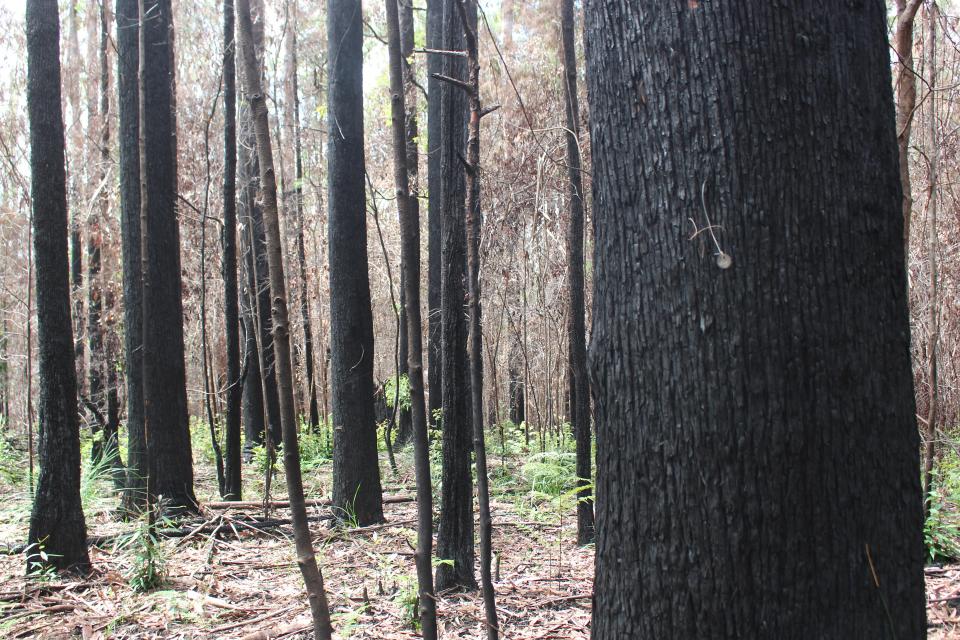Research leader
The 2019-2020 bushfire season was unprecedented in scale, and burnt more than half of the Gondwana Rainforest World Heritage area in northern NSW, including the Whain Whian silvicultural systems project (WWSSP), in what is now Nightcap National Park. This provided a unique opportunity to assess variation in fire severity and plant responses according to stem density. WWSSP was established in 1943, and plots were exposed to different thinning intensities of thinning in 1958. These plots were burnt in 2019, and in 2020 we assessed the severity of bushfire impacts and the fire responses of the dominant species, Eucalyptus pilularis in addition to co-dominant wet sclerophyll forest species. Fire severity appeared to be positively correlated with stem density: unthinned plots a higher proportion of dead or canopy-consumed E. pilularis. In contrast, E. pilularis in heavily thinned plots were more likely to be alive (with or without epicormic resprouting) and in some cases were unburnt. Fire response of co-dominant species, including Allocasuarina torulosa and Syncarpia gloulifera varied by tree size. The relationship we observed between stem density and fire severity is logical – denser stands likely had more fuel. Our findings demonstrate that thinning may reduce fire severity and result in higher rates of tree survival. These results add to the growing body of literature on the positive ecological and biodiversity outcomes of thinning.





